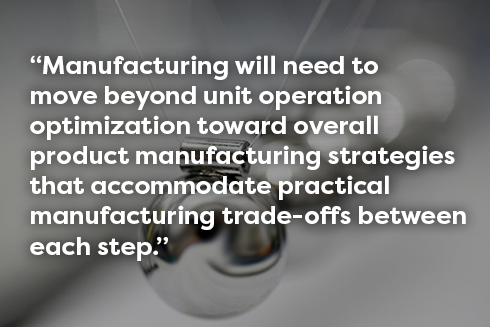As part of Cell and Gene Therapy Manufacturing Digital Week, GE Healthcare recently held a discussion on the challenges in cell therapy manufacturing over the past few years and how a paradigm shift in the cell therapy supply chain could help overcome many of them. Here we pick out some of the key highlights. Watch the full webinar presentation, as well as seven other on-demand webinars, here.
“At its core, cell therapy manufacturing presents a significant supply chain challenge. Whether one is considering the control and variability of starting materials, process flow within the manufacturing facility, or cryochain and shipping logistics, the success of a cell therapy is critically dependent on the orchestration of significant input variables.
The rapid pace of the field over the past several years, and the approval of two autologous CAR-T therapies in 2017, have helped to demonstrate the potential and the possibility of these innovative new therapies. It has also highlighted the complexity of manufacturing these therapies, with the associated cost and logistical challenges in administrating them. To shift this paradigm, manufacturing will need to move beyond unit operation optimization toward overall product manufacturing strategies that accommodate practical manufacturing trade-offs between each step.
The field will need to grapple with how to identify and evaluate these trade-offs, how to manage variables like donor material collection methods, patient genetic heterogeneity and treatment history, as well as, distributed product administration – all to assure product consistency, safety, and availability.”
Phil Vanek, GM of Cell Therapy Growth Strategy, Aaron Dulgar Tulloch, Director at BridGE@CCRM, and Kathie Schneider, Product Marketing Manager, all at GE Healthcare, have an in-depth discussion around these issues and how recent key learnings can help move the industry forward.
To start, Vanek introduces the major trends more generally in healthcare at the moment, picking out three main movements:
Personalization of medicine
- Dependence on genomic/metabolomic information
- Tailoring of therapies to individuals
- Big data emergence
Increasing complexity of medicines / therapies
- Increased dependence on technology
- Automation and digitization
- Deep biological understanding
Convergence of clinical and manufacturing pathways
- Destination medicine
- Changes in cell therapy logistics management
- Complexity of the cell therapy supply chain
- Medical devices
Vanek goes on to look at the challenges of moving a cell therapy from the academic and translational stage to a more commercial product:
“Today clinical centers might be tasked with treating five to ten to twenty patients a year and typically they’ll use very manual, disconnected, and open processes…The challenge with that is it introduces quite a bit of risk into the process, so as we move towards commercial manufacturing and scaling up, we now have to think about automating, connecting and closing each of those operations so the risk is taken out.”
Indeed, the whole discussion focuses around the idea that the risk associated with not changing can cause increase in cost or risk of failure.
CLICK HERE to watch the full 55-minute discussion, as well as seven other on-demand webinars from the 2018 Cell & Gene Therapy Manufacturing Digital Week.
